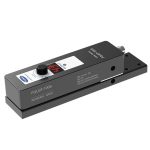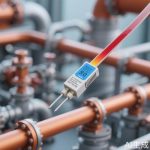Pressure sensors are the unsung heroes of modern industrial and technological systems, quietly ensuring everything from automotive safety to medical device accuracy. However, their effectiveness hinges entirely on one critical factor: proper installation. A poorly installed pressure sensor can lead to inaccurate readings, system failures, or even safety hazards. Whether you’re an engineer, technician, or DIY enthusiast, understanding the nuances of pressure sensor installation is paramount for achieving reliable performance and longevity.
The foundation of successful pressure sensor installation begins long before the physical mounting process. Proper planning and preparation can make the difference between a sensor that performs flawlessly for years and one that requires constant recalibration. Start by thoroughly reviewing the manufacturer’s specifications and installation guidelines specific to your sensor model. Consider environmental factors such as temperature extremes, potential exposure to corrosive substances, vibration levels, and electromagnetic interference that might affect your sensor’s performance.
Selecting the right location for installation is arguably the most crucial decision you’ll make. The mounting position should provide easy access for maintenance while minimizing exposure to extreme conditions. Avoid areas with excessive vibration or rapid temperature fluctuations. For liquid pressure measurement, ensure the sensor is mounted where it won’t trap air bubbles, and for gas systems, prevent liquid accumulation. The orientation matters too – many sensors have specific position requirements to function accurately, particularly those using certain sensing technologies.
Proper sealing and connection techniques form the backbone of reliable pressure sensor installation. Use appropriate thread sealants compatible with both your sensor materials and the medium being measured. For hydraulic systems, never use Teflon tape on tapered threads as shreds can contaminate the system. Instead, opt for liquid sealants designed for high-pressure applications. Ensure all connections are tight but avoid over-torquing, which can damage sensor threads or distort sensing elements. Following manufacturer-recommended torque specifications is essential for maintaining sensor integrity.
Electrical connections demand equal attention to detail. Use shielded cables to minimize electromagnetic interference, and ensure proper grounding according to the sensor’s requirements. Route cables away from power lines and other sources of electrical noise. For sensors with amplification or signal conditioning, verify that power requirements match your supply specifications. Implement strain relief on cables to prevent tension on electrical connections, which could lead to premature failure or intermittent signals.
Calibration and testing complete the installation process but are no less critical. Always calibrate sensors after installation rather than relying on factory calibration, as mounting stresses and environmental factors can affect performance. Establish a baseline reading under known conditions and verify the sensor’s response across its expected operating range. Document initial readings and calibration settings for future reference and maintenance purposes. Implement regular calibration schedules based on the criticality of your application and the sensor’s stability characteristics.
Remember that proper pressure sensor installation isn’t just about following steps – it’s about understanding the why behind each requirement. Each decision, from location selection to connection methods, impacts the sensor’s accuracy and reliability. By investing time in proper installation practices, you’re not just mounting a component; you’re ensuring the integrity of your entire system’s pressure measurement capabilities. The few extra minutes spent doing it right can prevent hours of troubleshooting and potentially save thousands in downtime or damage repairs down the line.




Leave a Message